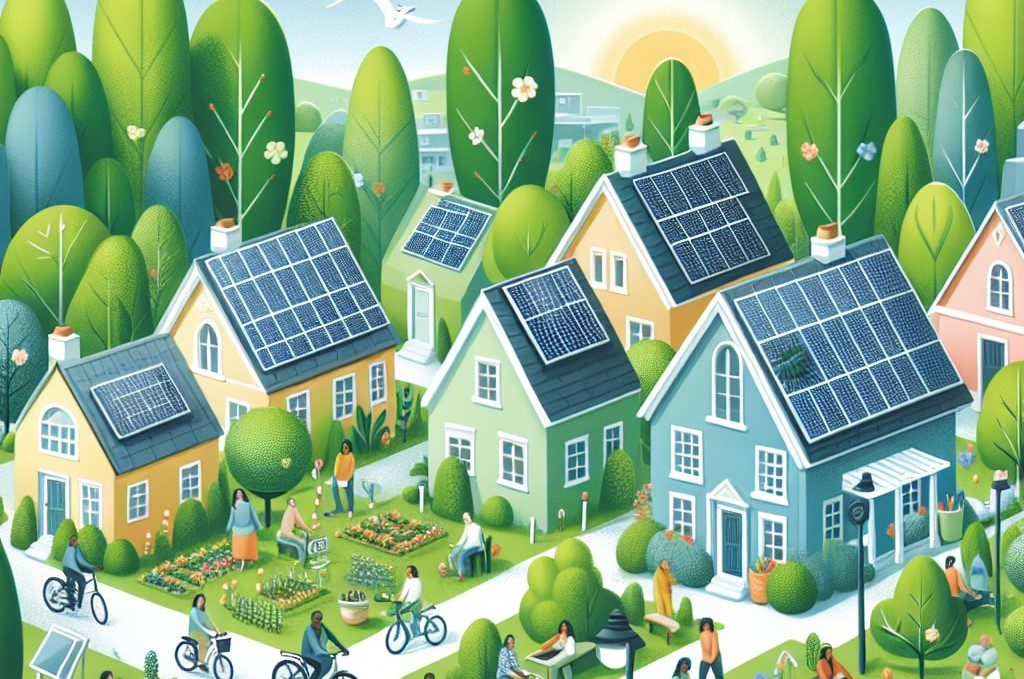In a world where environmental concerns are escalating, adopting sustainable living practices has never been more crucial. For eco-conscious consumers and green living advocates, this blog post aims to be your guide in navigating a sustainable lifestyle. Whether you’re just starting or looking to refine your existing habits, we’ll cover practical tips that can seamlessly integrate into your daily routine. By the end, you’ll have a clearer vision of how small changes can lead to big results for both your life and our planet.
What is Sustainable Living?
Sustainable living revolves around the principle of minimising your ecological footprint by making conscious choices regarding consumption and lifestyle. It involves reducing waste, conserving natural resources, and opting for products and services that are environmentally friendly. At its core, sustainable living promotes a balance between meeting present needs without compromising the ability of future generations to meet theirs.
Why does sustainable living matter? For starters, it’s about preserving the natural world. Our planet’s resources are finite, and overconsumption threatens not only the environment but also the survival of countless species. Additionally, sustainable living contributes to a healthier lifestyle. Organic foods, reduced air pollution, and less exposure to harmful chemicals all support personal well-being.
Sustainable living isn’t just a personal choice; it’s a societal necessity. As more individuals adopt eco-friendly practices, the cumulative impact can lead to significant environmental improvements. By making informed decisions, we help shape a future where sustainability is the norm rather than the exception.
Sustainable Living Tips for the Home
Your home is the perfect starting point for cultivating sustainable habits. Energy-efficient practices not only benefit the environment but can also trim down your utility bills. Consider switching to LED lighting, using smart thermostats, and insulating your home properly. These small adjustments can significantly cut energy consumption.
Reducing, reusing, and recycling are basic yet powerful principles. Opt for reusable bags, bottles, and containers. Set up a recycling system at home to ensure waste is sorted correctly. Composting organic waste is another effective way to minimize landfill contributions.
Eco-friendly products are now more accessible than ever. From biodegradable cleaning supplies to sustainably sourced furniture, the market is full of options that don’t compromise on style or functionality. By choosing these alternatives, you’re supporting manufacturers that prioritize the planet.
Sustainable Living Tips for Daily Life
Consumer choices carry weight. Opt for brands that demonstrate a commitment to sustainability, whether through ethical sourcing, recyclable packaging, or fair-trade practices. When shopping, prioritize quality over quantity to reduce waste.
Transportation is another area ripe for sustainable improvement. Consider carpooling, biking, or using public transit to lessen your carbon footprint. If feasible, invest in an electric vehicle or utilise ride-sharing apps that focus on eco-friendly options.
Water conservation is often overlooked but essential. Install low-flow faucets and showerheads, fix leaks promptly, and practise mindful water usage. These actions contribute significantly to reducing resource depletion.
The Benefits of Sustainable Living
Adopting sustainable habits offers a plethora of benefits. Environmentally, it reduces pollution, conserves natural resources, and mitigates climate change impacts. Every small action contributes to a larger movement towards a healthier planet.
On a personal level, sustainable living often coincides with improved health and well-being. Organic foods lack harmful pesticides, clean air boosts respiratory health, and toxin-free products reduce exposure to chemicals.
Financially, sustainable living often leads to savings in the long run. Energy-efficient appliances, reduced water bills, and cutting down on excessive purchases can free up funds for other pursuits.
Challenges and Solutions in Adopting Sustainable Living
Transitioning to sustainable living can pose challenges, but they are not insurmountable. Cost can be a deterrent, as eco-friendly products sometimes come with a higher price tag. However, buying in bulk, focusing on multi-use items, and gradually transitioning can alleviate this concern.
Convenience is another barrier. Many eco-friendly options require a shift in habits, such as remembering reusable bags or planning transport ahead of time. Start small and build up gradually to make these habits second nature.
Lack of information can also hinder efforts. Seek out trustworthy resources online, join local sustainability groups, and engage in community events to expand your knowledge and network.
How to Measure Your Sustainable Living Impact
To effectively measure your impact, consider tools like carbon footprint calculators. These resources provide insight into your current environmental effect and highlight areas for improvement. Regularly track your progress to stay motivated.
Setting goals is crucial. Aim to reduce energy usage by a specific percentage or commit to a certain number of sustainable purchases each month. Clear targets make it easier to track success and inspire continued effort.
Celebrate milestones, no matter how small. Whether it’s a reduced electricity bill or a successful composting attempt, acknowledging achievements fosters a sense of accomplishment and encourages ongoing dedication.
Conclusion
Sustainable living is more than a trend—it’s a vital approach to preserving our planet for future generations. By integrating eco-friendly practices into your home and daily life, you contribute to a healthier environment and reap personal rewards. Start with small changes, measure your impact, and take pride in your role as a steward of the Earth.
Ready to take the next step? Join a community of like-minded individuals, share your experiences, and let’s foster a sustainable future together. Spread the word by sharing this post, and let’s inspire others to make impactful changes today.







